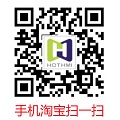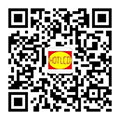The current state of electric vehicles
As the market for electric vehicles grows, so too do the accessories that come with it. Displays are one of them. As we all know, electric vehicles, especially two-wheelers, are subject to exposure to the elements, so such displays must withstand very harsh conditions. Electric vehicle users often find that the previous instrument panel cannot be read smoothly in strong sunlight. To make the display readable in sunlight, this means that the display brightness must be significantly increased or the impact of high ambient brightness must be reduced. Otherwise, the displayed image will appear washed out, and in particular the color saturation will be completely lost. For classic displays in transmissive mode (e.g. TFT) or self-emissive mode (e.g. AMOLED), a surface brightness of at least 2,000 nits (cd/m2) is required for good readability. However, displays with such high brightness have significant disadvantages, such as high energy consumption, aging effects, limited service life, and high power losses resulting in high temperatures.
How can we make the display screen readable in sunlight while achieving low power consumption and being non-resistant to aging?
Older display technologies achieve a reflectivity of about 1% to 2% of the ambient light. However, the reflectivity is not high enough for the viewer to read the information on the display, and these displays are no longer suitable for modern applications.
Transflective displays (semi-transmissive and semi-reflective displays) have been on the market for some time. The latest display technology achieves a reflectivity of up to 16%. This produces high color saturation and contrast even in direct sunlight (Figure 1). Such displays are achieved by combining ECB technology (Electrically Controlled Birefringence) with TN (Twisted Nematic) or IPS technology (In-Plane Switching), which enables excellent contrast and color values under all conditions.
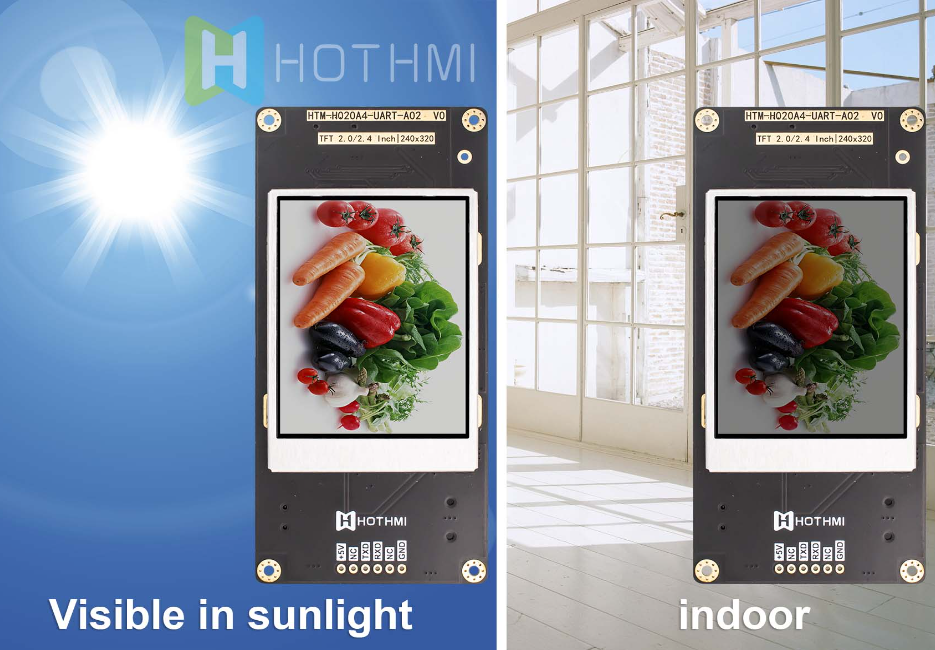
(Figure 1)
Application Principle
ECB technology makes it possible to implement two different display modes within one LCD unit (Figure 2). A single pixel is divided into two areas: a reflective part and a transmissive part. This allows for optimal design of different operating conditions, making the display flexible for both sunny conditions as well as dark environments. This technology makes it possible to control the division ratio between reflective and transmissive areas for customer-specific displays and optimize it for the application.
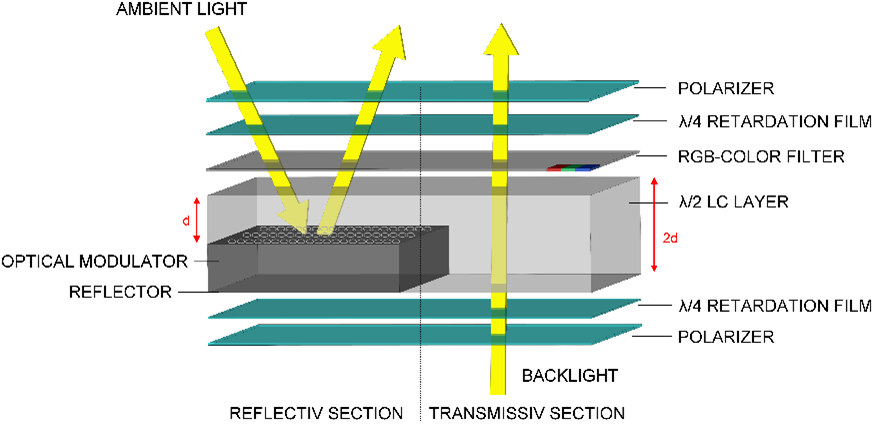
(圖2)
The transmissive part of the cell corresponds to a conventional TFT design with RGB color filters. The liquid crystals are arranged similarly to a TN cell. The backlight is modulated by the cell. This results in high color saturation (NTSC: > 50%) and a high contrast ratio of typically 200:1. (Figure 3)
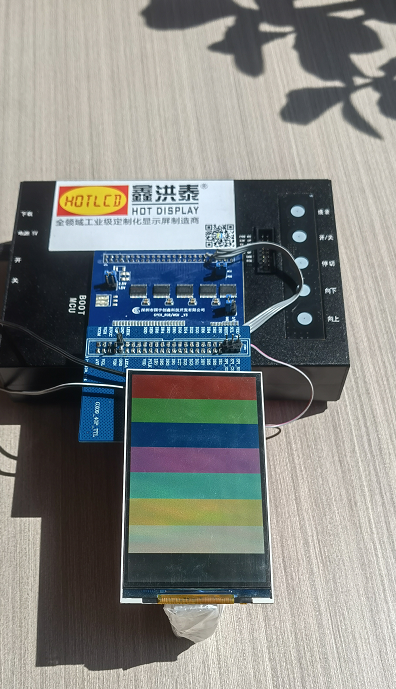
(Figure 3)
In the transflective part of the cell, a metallic reflective layer is implemented together with an optical modulation compensation layer in the form of microlenses. The ambient light passes through the light path twice. This allows good color saturation values and contrast to be achieved. The integrated lens modulation guarantees good readability at different viewing angles.
Since the viewer always sees the entire cell area, the contrast and color saturation values are averaged. They are generated from both cell areas. This results in color saturation values of typically 6% in reflective mode and 18% in transmissive mode. The contrast values are also similar: from 6:1 to 35:1.
Related transflective TFT product recommendations:
5" TFT display TN 800x480px Sunlight readable RGB interface/can
be equipped with touch screen
Model: TFT-H050A18SVRJDNN40
Type: TN display
Display pixels: 800x480 Px
Overall dimensions (mm): 112.20x74.80x3.0
Display inches: 5.0"
Effective size (mm): 108x64.8
Application: STM32/RK series
Viewing angle: Normally White (Trans-Reflective)
Brightness: 50cd/m2
Pin: FPC-40PIN
Interface: RGB
Special reminder: Anti-static ESD 8KV
Working temperature: -20~70℃
Power supply voltage: 3.3V
Driver chip: T.B.D
Do you want an outstanding display for your e-mobility application? As a display expert, we at Hot Display will be happy to advise you and show you the options. Contact us directly!
Related articles recommended:
What are transmissive, reflective, and transflective displays?







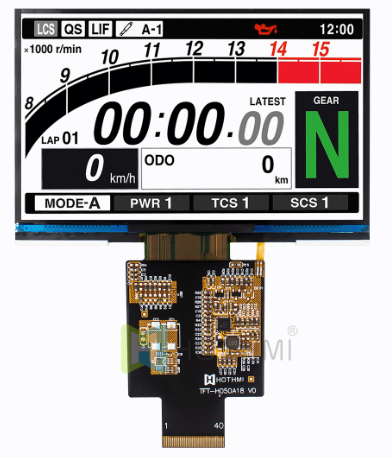
 Search
Search



